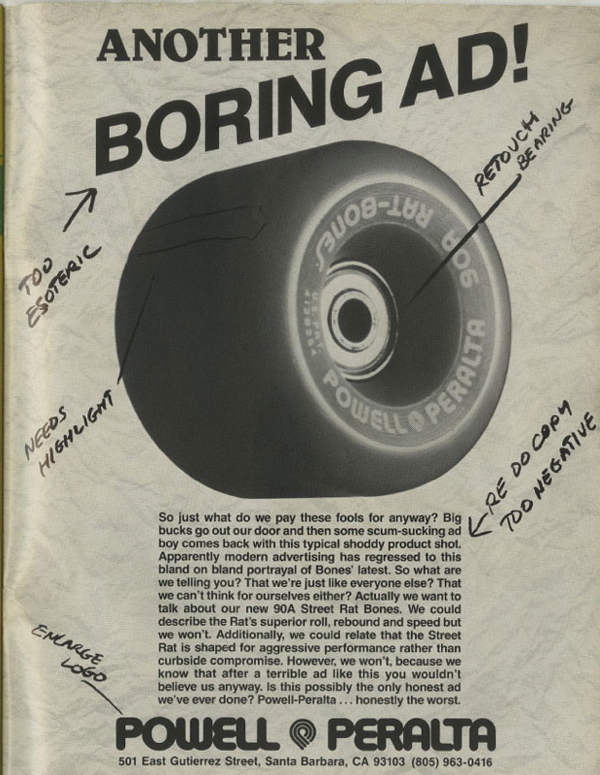4 Reasons Why Your Readers Would Unsubscribe and How You Can Remedy That
-
UncategorizedUpdatedPosted:
On this page
Once upon a time, marketers could get away with broadcasting their products and services via advertisements, because viewers didn’t have the option to skip through or filter out the ads. Consumers just had to suffer in silence.
Today, any Tom, Dick and Harry can skip advertisements on YouTube; close the browser window if an article is too boring; and send promotional emails directly to a dedicated inbox, thanks to Gmail tabs.
In other words, we’re living in a time where consumers have the upper hand: They have the unprecedented ability to pick and choose what they want to consume.
For email marketers, this means inboxes are getting harder and harder to reach. It’s one thing if your readers don’t even bother to open your emails — there’s always a chance to win readers back. But it’s a whole new ballgame when they take active measures to show their disdain for your emails by unsubscribing from your list altogether (forever). The message is crystal clear: Your emails don’t deserve a spot in readers’ inboxes.
Access denied.
Ouch.
How can you earn back your precious spot in their elusive inboxes? Let’s examine the reasons why your readers would unsubscribe in the first place, and how you can remedy that.
1. You send too many emails
Have you ever subscribed to an email newsletter, only to be bombarded by emails for the next 7 days straight? Bet you didn’t like that, and you wouldn’t be alone in that sentiment. Research done by MailChimp has shown that the more emails you send, the more engagement per campaign drops:
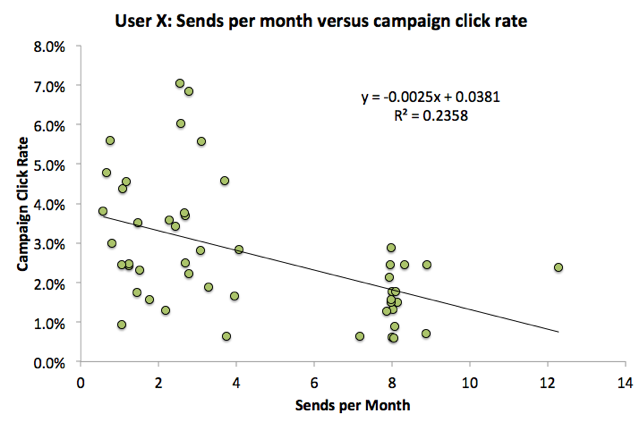
A study done by Chadwick Martin Bailey also supports this: 69 percent of the respondents cited “too many emails” as the No. 1 reason for unsubscribing from an email list.
Remedy: Start small, and slowly increase the volume of emails sent while monitoring the drop-off rate. Instead of going all out and causing irreparable damage, pick segments of your list to test the waters,.
For example, using a small (but meaningful) sample, you could try increasing email send frequency from twice to thrice over a month to see whether it causes the opt-out rate to increase or decrease. HubSpot has an excellent five-step process to determine optimal email frequency by adopting A/B testing.
2. You send irrelevant emails
On the other hand, your readers would be very glad to hear from you — except everything you send is completely irrelevant to their situation.
And guess what? Your readers aren’t going to just sit back and take your irrelevant nonsense! A recent survey released by Janrain and Blue Research reveals that more than 9 in 10 respondents clearly dislike these poorly targeted efforts and are decidedly proactive in showing their disdain: 94 percent of respondents take some form of negative action, as shown in the chart below.
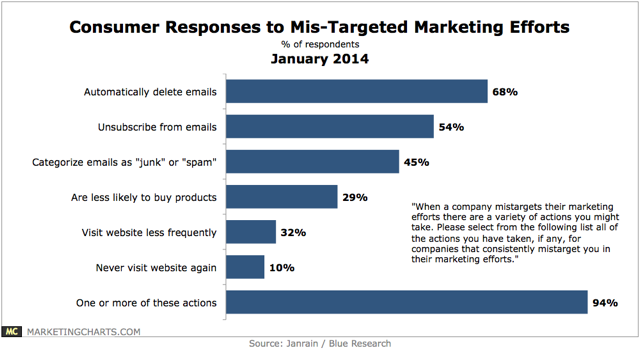
And, yes, 54 percent unsubscribe from those email lists. Yikes!
Remedy: If you haven’t already, it’s time to segment your email database according to your prospective buyer personas or customer profiles (you do have those, right?).
Once done, make sure to send the most relevant content to each segment, and keep tweaking while you observe the opt-out rate in order to determine which type of content keeps customers around and which drives them away.
3.You emails aren’t mobile-friendly
Did you know that 48 percent of emails are opened on mobile devices? Here’s another fun fact: 79 percent of smartphone owners use their phones for reading email, a higher percentage than respondents who use their phones for making calls. Suffice it to say that, more and more, emails are opened on mobile devices rather than on desktops.
Surprisingly, a large number of companies are still dropping the ball in the mobile world. In fact, just 11 percent of emails sent are mobile responsive and 71 percent of the companies surveyed here having a nonexistent or basic strategy for optimizing email for mobile devices.
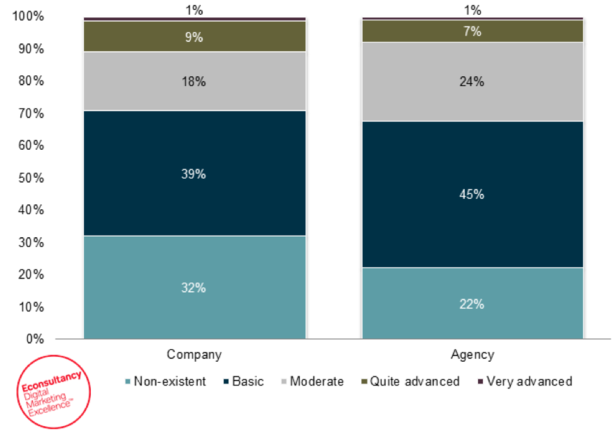
Now, what would you do if you received an email on your phone, and the message looked like the one below?

Remedy: Make sure you optimize your emails for mobile devices. It isn’t all that hard; this fantastic guide from GetResponse will help you optimize your emails in a matter of minutes:
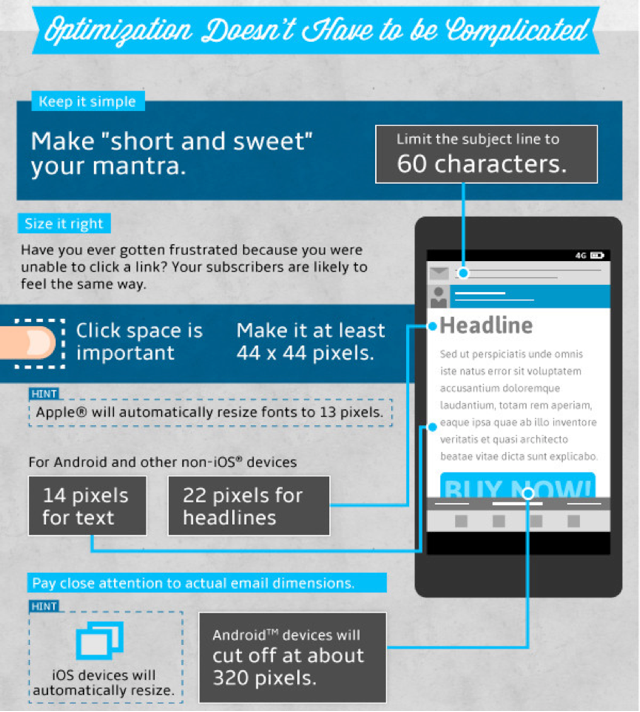
Alternatively, responsive email templates will work just fine, too. Here’s a list of 32 responsive email templates you could use.
4. Your emails are just plain boring
Throwing together some words and pictures to market your product or service just won’t cut it. Your readers subscribed to your newsletter because they wanted to get something out of them, but a steady stream of pitches probably wasn’t one of those things.
Consumers nowadays are just not convinced that they are getting the value they want in exchange for their email addresses. A study released by Forbes Insights and Turn found that a mere 2 percent of B2C customers said they believe they benefit more than companies when sharing their data.
Remedy: Ensure that any content delivered to your readers’ inboxes is high quality, and nothing short of it. In addition, whatever you promised your readers when you got them to sign up must be delivered, whether it be tips and tricks or exclusive offers.
This email newsletter from RunKeeper is a great example of following through on a promise to deliver “tips and inspiration” — and it’s beautiful to boot:

It is becoming harder and harder to excel at email marketing, especially with bigwigs such as Google working to keep the quality of emails as high as possible for their users. That alone isn’t necessarily a bad thing; it keeps marketers on their toes and has forced them to up their games accordingly.
At the end of the day, reaching the elusive inbox isn’t elusive at all — it just takes hard and honest work.
Want to send more personalized mobile and email messages to your users?
Learn moreCustomer story

How Vero helps Plann cater to the needs of an agile startup that's scaling up quickly

